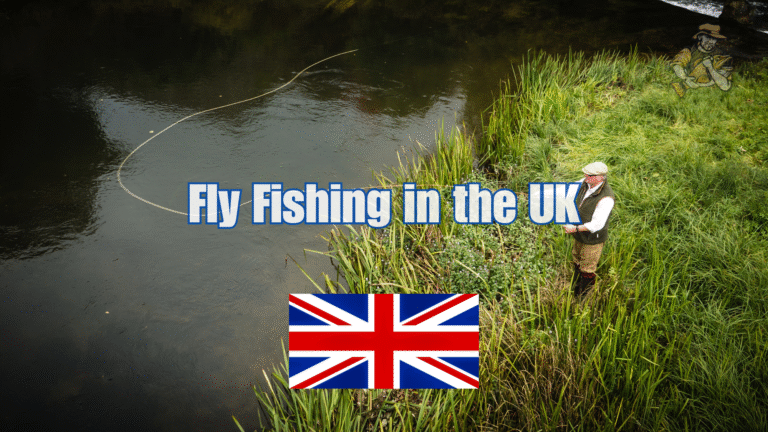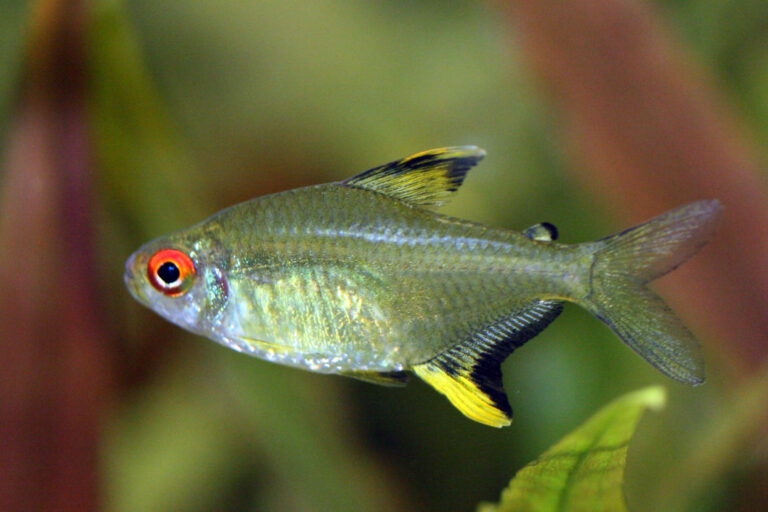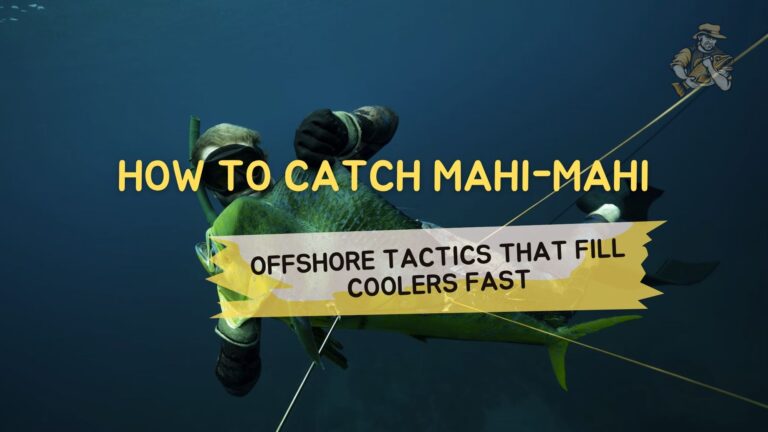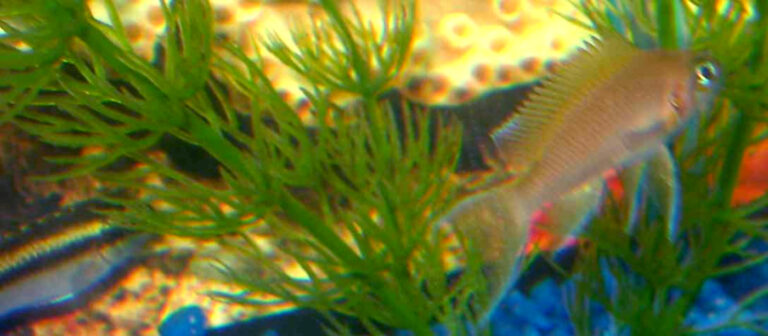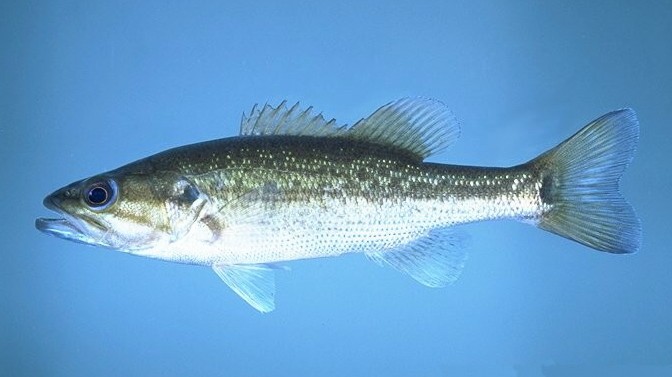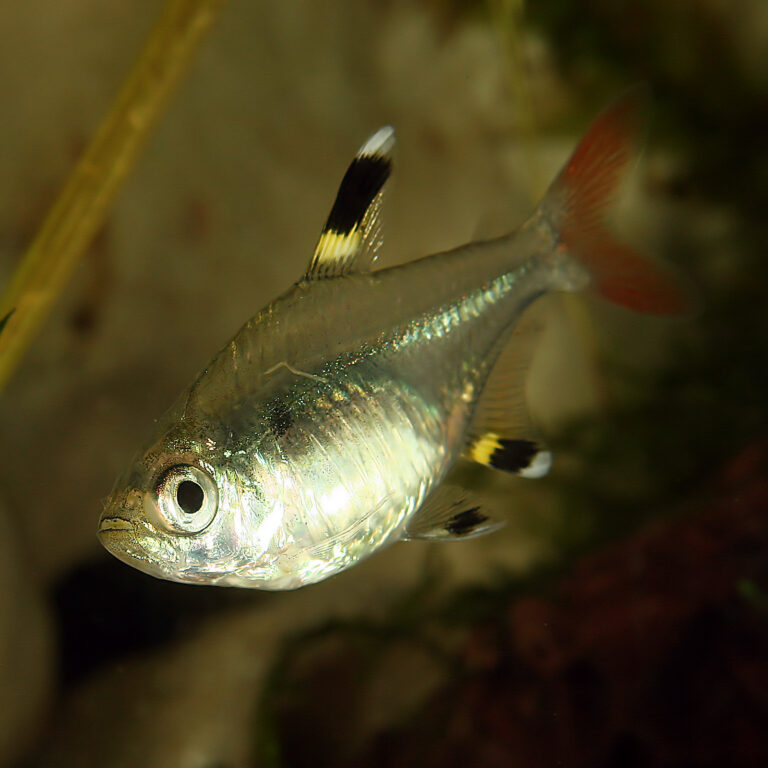Caribbean Inshore Fishing: Bonefish and Permit Tactics
By Adam Hawthorne | Last Modified: May 19, 2025

There’s something almost magical about stalking the shallow flats of the Caribbean. I still remember my first bonefish – hands shaking as that silver ghost materialized on a Bahamian flat, tailing in water so clear I could count the grains of sand beneath it. That was 15 years ago, and I’ve been chasing that rush ever since.
Caribbean inshore fishing offers some of the most technical yet rewarding angling opportunities you’ll ever experience. Whether you’re sight-casting to tailing bonefish or trying to tempt the notoriously finicky permit, the challenge is undeniable – and that’s exactly what makes it so addictive.
Understanding Caribbean Flats Fishing Environments
The Caribbean’s inshore fishery is defined by its crystal-clear flats – extensive shallow areas with sandy or grassy bottoms where fish come to feed during specific tide cycles. These ecosystems vary dramatically from island to island.
My first major mistake was assuming all Caribbean flats were the same. The hard, white sand flats of the Bahamas are completely different from the turtle grass flats of Belize or the marly bottom in parts of Cuba. Each environment dictates different approaches.
Two years ago, I spent a week fishing the north shore of Cuba where the bottom was this weird mix of sand and mud. My guide Manuel kept pointing out these subtle depressions – what he called “bonefish highways” – that were impossible to see until I borrowed his polarized glasses with amber lenses. Changed everything about how I read that water.
The most productive flats typically have a few key features:
- Access to deeper water (escape routes for the fish)
- Good water flow (brings in food sources)
- Structure like mangroves, coral patches, or grass beds
- Protection from heavy wind and waves
The environment also changes dramatically with tide cycles. What looks like perfect bonefish water at 9am might be bone-dry by noon. Learning to read these cycles is crucial.
Tidal Movements and Fish Behavior
Bonefish and permit feeding patterns are closely tied to tidal movements. Generally speaking:
- Rising tide: Fish move onto the flats to feed, often following specific “highways”
- High tide: Fish spread out across the flats, sometimes into very shallow areas
- Falling tide: Fish begin retreating, often concentrating around channels and cuts
- Low tide: Fish typically hold in deeper channels or basins adjacent to the flats
I learned this lesson the hard way in Andros. My buddy Dave and I waded out to a promising flat at 2pm, not realizing we were fishing the bottom of a falling tide. Spent three hours seeing absolutely nothing until our guide Jose finally radioed asking what the hell we were doing. “Those fish left two hours ago,” he laughed when we got back to the boat.
Different islands have dramatically different tidal ranges. The Bahamas might see 1-2 feet of movement, while parts of Belize can experience 3-4 foot tides. Understanding the local patterns is essential, tidal charts for Caribbean locations can be helpful, but nothing beats local knowledge.
Essential Gear for Caribbean Flats Fishing
Let’s talk gear – and I promise not to just regurgitate the same recommendations you’ll find in every article.
For rods, the standard advice is 7-9 weight for bonefish and 9-10 weight for permit. That’s generally correct, but context matters. For example, when I fished Los Roques in Venezuela where the bonefish average 2-3 pounds, my 7-weight was perfect. But in the Marls of Abaco where 6-8 pound bones are common, that same rod felt seriously underpowered.
For reels, you absolutely need quality drag systems. This isn’t where you want to save money. I learned this the hard way when a massive Grand Bahama bonefish smoked my budget reel and broke me off on the backing knot. That was a $400 mistake counting the lost fly line.
My current setup is:
- Bonefish: 8-weight Sage Salt HD with a Hatch 7 Plus reel
- Permit: 9-weight Scott Sector with a Nautilus NV-G 8/9
But honestly, any quality salt rod with a good reel will work. One guideline – make sure your reel can hold at least 200 yards of backing. Bonefish earned their reputation as the “ghost of the flats” not just for their color but for how quickly they can disappear into the horizon with your line.
Lines, Leaders, and Terminal Tackle
For tropical flats, floating lines are the standard. I prefer lines specifically designed for tropical conditions – they remain stiff enough in hot weather to cast effectively.
Leader selection is where things get interesting. For bonefish in most situations, I use a 9-12 foot tapered leader ending in 10-12 pound fluorocarbon tippet. But when fishing extremely shallow water with spooky fish (like the infamous Bight of Acklins), I’ll go as light as 8-pound test and up to 15 feet total length.
For permit, I never go lighter than 16-pound fluorocarbon, usually on a 10-12 foot leader. These fish have incredibly abrasive mouths and will make short work of lighter tippets.
Let me share a rigging trick I picked up from my buddy Rick who guides in Key West. When fishing for permit around coral heads, he ties about 24 inches of 30-pound fluorocarbon as a shock tippet between the leader and the standard 16-pound tippet. Looks ridiculous but has saved countless fish that would’ve otherwise broken off on coral.
Flies That Actually Work
Every flat is different, and local patterns often outperform the “standard” flies. That said, a few patterns have proven themselves across the Caribbean:
For Bonefish:
- Gotcha (sizes 4-8) – The gold standard for a reason
- Bonefish Bitter (sizes 6-8) – Less flash for spooky fish
- Crazy Charlie (sizes 4-8) – Classic pattern that still works
- Peterson’s Spawning Shrimp (size 6) – My personal favorite for reluctant fish
For Permit:
- Merkin Crab (sizes 2-4) – The permit classic
- Raghead Crab (sizes 2-4) – My go-to in deeper water
- Flexo Crab (size 4) – Great in current
- EP Spawning Shrimp (size 2) – Sometimes the only fly they’ll take
I’ve seen too many anglers bring dozens of elaborate flies only to find that the simple, local patterns work best. When I fished Long Island in the Bahamas, the guide cut the tail off my fancy Gotcha pattern saying it was “too much.” He was right – caught three fish in the next hour.
Weight matters tremendously. A fly that sinks too quickly will spook bonefish in 8 inches of water but might be perfect in 2 feet. I carry the same patterns with different weight eyes and bead chains for various depths.
The Critical Importance of Proper Footwear and Sun Protection
Don’t skimp on flats boots. Those white sand flats look pristine until you step on a stingray or fire coral. I wear Simms Flats Sneakers with neoprene socks to prevent blisters.
The Caribbean sun is relentless. My standard kit includes:
- Long-sleeve technical shirts (buff colored, not white which glares)
- Full-coverage buff
- Wide-brimmed hat with dark underside to reduce glare
- Fingerless gloves (after burning my knuckles badly in Eleuthera)
- High-quality polarized sunglasses (I prefer copper lenses for most flats)
That last item is non-negotiable. Without proper polarized glasses, you simply won’t see the fish. Period. I use Smith ChromaPop Copper lenses for most conditions and switch to amber in very shallow water over light bottom.
Bonefish Tactics: Finding Success on the Flats
Bonefish hunting is all about stealth, accuracy, and patience. These fish have survived by being incredibly wary.
Reading the Water and Spotting Fish
Most beginners struggle with spotting bonefish. They’re called ghosts for a reason – their silver sides reflect the bottom, making them nearly invisible.
Look for:
- Nervous water (slight rippling)
- Mud puffs (stirred up bottom from feeding)
- Tailing fish (tails and dorsal fins breaking the surface)
- Shadows on the bottom
- Flashes of silver as fish turn
The most important skill is learning to distinguish between different types of bottom disturbance. Two summers ago in Exuma, I spent an hour casting at what I thought were tailing bonefish, only to discover they were just turtle grass moving in the current. My guide Carlos couldn’t stop laughing.
When scanning the water, don’t focus on looking for whole fish. Instead, look for anything that seems out of place or moving differently than the surroundings. Often you’ll spot just part of a fish – a tail, a dorsal fin, or even just a shadow.
Approach and Presentation Strategies
The cardinal rule: never cast directly at a bonefish. These fish have a narrow field of vision directly ahead, but excellent peripheral vision. Cast your fly 3-6 feet ahead of the fish’s path and let them find it.
Different situations call for different presentations:
- For tailing fish: Cast well beyond the fish and slowly bring the fly into their feeding zone
- For cruising fish: Lead them by 5-10 feet depending on their speed
- For mudding fish: Cast into the edge of the mud cloud
My worst bonefishing day ever was in Cozumel when I kept casting directly at every fish I saw. The guide was ready to throw me overboard by lunchtime. “The fish don’t like to be hit in the head with flies,” he explained with remarkable restraint.
The retrieve is equally important. Bonefish typically eat prey that’s trying to escape, so your strip should imitate this behavior. For most situations, short, quick strips work best. But for very spooky fish in shallow water, sometimes a slow, subtle movement or even a dead drift is more effective.
The Strip-Strike and Fighting Techniques
When a bonefish takes your fly, resist the urge to lift your rod tip. Instead, perform a strip-strike by pulling firmly on the line with your stripping hand. Lifting the rod will often pull the fly out of the fish’s mouth.
This was a hard habit for me to break. After years of trout fishing, the rod-lift was ingrained in my muscle memory. Lost a lot of fish until it became automatic.
Once hooked, keep your rod tip low and to the side during the initial run. Bonefish make blistering first runs – often 100+ yards – and a high rod puts too much pressure on light tippets.
When the fish slows, gradually raise your rod to apply more pressure. But be ready for multiple runs. I’ve had big bones make 4-5 strong runs before coming to hand.
Never chase a running bonefish by wading after it. You’ll spook every other fish on the flat. Instead, stay put and let the fish run, managing your line carefully to prevent tangles.
Permit Fishing: The Ultimate Challenge
If bonefish are difficult, permit are nearly impossible. These fish are the ultimate test of an angler’s skill and patience.
Understanding Permit Behavior and Habitats
Permit behavior varies significantly across the Caribbean. In Belize, they often cruise in deeper water around coral heads. In Cuba, you’ll find them tailing aggressively on the flats. In Mexico’s Yucatan, they often mix with stingrays.
What remains consistent is their wariness and unpredictability. A permit might follow your fly for 30 feet before refusing it, or ignore perfect presentations while pouncing on a terribly cast fly.
Last spring in Chetumal Bay, I watched a permit track my crab pattern for what seemed like forever. It was right there, inches behind the fly. I maintained the retrieve, heart pounding. Then, for no apparent reason, it spooked and shot off the flat like it had seen a shark. My guide Ramon just shrugged. “Is permit,” he said. That pretty much sums it up.
While bonefish prefer sandy flats with some grass, permit often prefer areas with structure – coral patches, rock outcroppings, or channel edges. They also frequently associate with stingrays, which stir up crustaceans from the bottom as they move.
Advanced Casting and Presentation for Permit
Permit demand technical excellence in your cast. They require:
- Longer casts (often 60+ feet)
- Pinpoint accuracy
- Minimal false casting (which spooks them)
- Delicate presentation despite heavy flies
The ideal presentation puts your crab or shrimp pattern about 3-4 feet ahead of the fish. Unlike with bonefish, permit flies should usually hit the bottom quickly and create a small puff of sand – mimicking a crab or shrimp trying to bury itself.
I remember a particularly frustrating day in Ascension Bay where I had 11 legitimate shots at permit. Made decent presentations to most of them. Got follows from 5 fish. Had 2 actually mouth the fly. Landed zero. That’s permit fishing. You need to embrace the challenge rather than the outcome.
Patience: The Most Important Permit Skill
More than any technical skill, permit fishing requires mental fortitude. Be prepared for days without a fish. Be prepared for refusals. Be prepared for heartbreak.
My friend Mike, who guides in the Keys, has a saying: “When permit fishing, expect nothing and appreciate everything.” That’s the mindset you need.
The average angler needs about 20-25 legitimate shots at permit before landing one. My first took 31 attempts across three different trips. But when that fish finally ate, the feeling was indescribable.
If you find yourself getting frustrated, switch to bonefish for a while. Catching a few fish can reset your mental state before returning to the permit game.
Common Mistakes and How to Avoid Them
Over decades of Caribbean flats fishing, I’ve made every mistake possible. Learn from my pain.
Mistake #1: Poor Fish Spotting Technique
Many beginners constantly scan back and forth, creating a blurred view that makes fish impossible to spot. Instead, move your eyes methodically in sections, focusing carefully on each area before moving to the next.
I’ve found wearing a cap with a dark underside helps tremendously by reducing glare. I replaced the standard brown underside of my favorite fishing hat with black felt, and my spotting improved immediately.
Also, don’t just look for whole fish. Often you’ll only see parts – a tail, a shadow, or a wake. Train yourself to spot these subtle signs.
Mistake #2: Line Management Issues
Nothing ruins a shot faster than line tangling around your feet. Practice proper line management:
- Strip line into a bucket or onto a stripping mat when wading
- Keep only the amount of line you can comfortably cast outside the rod
- Check for tangles before each cast
- Learn to shoot line efficiently
I watched a guy in Andros lose a potential 10+ pound bonefish because his loose line wrapped around a mangrove root during the fight. Thirty seconds of preventative line management would have landed that trophy.
Mistake #3: Rushing Shots and Poor Preparation
The excitement of seeing a fish often leads to rushed, poor-quality casts. When you spot a fish:
- Take a breath
- Assess its direction and speed
- Strip out appropriate line
- Make one good cast rather than three bad ones
The temptation to “just get something out there” is strong, but resist it. A bad cast spooks fish, while patience might give you a better angle in a few moments.
Last year in the Abacos, I rushed a cast to a huge bonefish and lined it (cast my fly line over the fish). Not only did it spook, but it spooked four other fish I hadn’t even seen. My guide just shook his head and said, “That’s why we take our time.”
Mistake #4: Ignoring Local Knowledge
Hiring a guide isn’t just about finding fish – it’s about learning the specific techniques that work in that location. What works in the Bahamas might fail completely in Belize.
I remember arguing with a guide in Cuba about fly selection. I insisted on using my go-to Peterson’s Spawning Shrimp that had worked well in the Bahamas. After watching me get refused by several fish, he practically begged me to try his simple pink-and-white local pattern. Reluctantly, I switched – and caught a bonefish on the very next cast.
Local knowledge isn’t just a luxury; it’s essential for success.
Caribbean Island-Specific Tactics
Each Caribbean destination offers unique challenges and opportunities. Here’s a quick breakdown of some major destinations:
The Bahamas
Known for: Massive bonefish populations, hard white sand flats, generally shallow water
Specialized tactics: Ultra-long leaders (12-15 feet) for spooky fish, smaller flies (#6-8), very subtle presentations
Notable locations: Andros (the bonefish capital), Abaco, Grand Bahama, Long Island, Acklins
Personal experience: The Bight of Acklins has the spookiest bonefish I’ve ever encountered. After getting refusal after refusal, our guide Perry had me remove all flash from my fly, lengthen my leader to nearly 15 feet, and make my strips almost imperceptibly small. Finally started hooking fish.
Belize
Known for: Permit, deeper turtle grass flats, diverse environments
Specialized tactics: Heavier flies for deeper water, focus on channels between cayes
Notable locations: Ambergris Caye, Turneffe Atoll, Punta Gorda
Personal experience: The permit around Turneffe Atoll often travel with rays. My guide Edwin taught me to cast about two feet in front of the ray’s nose and wait – the permit would often dart forward to investigate the fly even if they weren’t immediately visible.
Mexico (Yucatan Peninsula)
Known for: Grand Slam opportunities (bonefish, permit, tarpon), varied flats
Specialized tactics: Versatility is key, prepare for quick transitions between species
Notable locations: Ascension Bay, Espiritu Santo Bay, Chetumal Bay
Personal experience: In Ascension Bay, we found schools of bonefish in extremely shallow water (6-8 inches) feeding on tiny shrimp. The standard flies were too heavy and spooked them instantly. Our guide Miguel trimmed the weight off a Gotcha with pliers and added just two wraps of lead wire – that modified fly produced all day.
Cuba
Known for: Less pressured fish, diverse environments ranging from hard flats to mud bottoms
Specialized tactics: More aggressive retrieves often work on fish that see fewer flies
Notable locations: Jardines de la Reina, Cayo Largo, Las Salinas
Personal experience: The permit in Cayo Largo often feed in extremely shallow water where you can see their backs out of the water. Unlike in other locations, they were surprisingly aggressive, sometimes chasing flies for 30+ feet before eating.
Weather Factors and Seasonal Considerations
Weather dramatically affects flats fishing. Understanding these effects can save a trip.
Wind and Light Conditions
Contrary to popular belief, a moderate wind (8-12 mph) is actually beneficial for flats fishing. It creates a slight surface chop that makes it harder for fish to spot you or your line, and it helps mask any sounds you make.
However, winds over 15-20 mph make sight fishing extremely difficult. In high winds, focus on leeward shorelines or flats with mangrove protection.
Light conditions are equally important. Cloudy days make spotting nearly impossible on some flats. On overcast days:
- Focus on very shallow water where fish are easier to spot
- Look for nervous water or tailing fish
- Pay extra attention to areas where fish are known to feed
The worst combination is bright sun directly overhead with no wind. This creates maximum visibility for the fish to spot you, with minimal surface disturbance to hide your presence.
In September 2019, I experienced perfect conditions in Belize – partly cloudy with sun breaks and a steady 10 mph breeze. Spotted more bonefish that day than any other time in my life. Two days later, with flat calm conditions and harsh sun, we struggled to find half as many fish. Same flats, completely different results.
Seasonal Patterns and Migration
Caribbean bonefish and permit move according to seasonal patterns:
- Winter/Spring: Fish often move to deeper flats for protection from cold fronts
- Summer: Fish spread out across all available habitat, including very shallow water
- Fall: Often the best season as fish feed aggressively before winter
Water temperature is a critical factor. Bonefish become sluggish below about 70°F and tend to move to deeper water. Above 85°F, they may seek cooler, oxygen-rich channels, especially during midday.
During my trip to Andros in July two years ago, we found no bonefish on the flats from 11am-3pm – they had retreated to deeper water as temperatures on the shallow flats approached 90°F. We switched to fishing the edges of channels during those hours with good success.
Regional weather patterns also matter tremendously. The Bahamas can experience cold fronts in winter that dramatically affect fishing. Mexico and Belize see rainy seasons that can muddy the water but also concentrate fish in certain areas.
Tides and Moon Phases
Tidal movements create feeding opportunities as they flood new areas or force fish into channels. Understanding local tide tables is essential – Caribbean tide information is readily available online, but a good guide will know exactly how tides affect specific flats.
Moon phases also influence behavior, particularly for permit which often spawn around full and new moons. The days leading up to these moon phases can provide exceptional permit fishing as fish gather in preparation.
The most productive tidal stages vary by location:
- In the Bahamas, I’ve had best success on the rising tide
- In Belize, falling tide concentrated fish along channels
- In Cuba, dead low tide allowed access to remote flats others couldn’t reach
The speed of tidal movement matters too. Spring tides (stronger flows around new and full moons) create more current, which generally means more active feeding.
Catch and Release Best Practices
The future of flats fishing depends on proper catch and release techniques. These fish are too valuable to take.
Proper Handling Techniques
For bonefish:
- Use barbless hooks or crimp barbs
- Wet your hands before handling fish
- Support the fish horizontally with both hands
- Never grip by the gills or eye sockets
- Keep the fish in the water while removing the hook
- Limit air exposure to 10 seconds maximum
For permit:
- The same rules apply, but be extra careful with these more delicate fish
- Support larger permit under the belly to prevent organ damage
- Revive thoroughly before release, sometimes for several minutes
I made a rookie mistake years ago in Grand Bahama, lifting a bonefish completely out of water for a photo. The guide Ricardo immediately corrected me, explaining that air exposure damages the protective slime coat and can lead to fungal infections. Now I keep them in the water and take quick photos from above.
Recovery and Release Methods
Proper release is as important as proper handling:
- Hold the fish gently in the water, facing into the current
- Move it slightly forward and back to push water through the gills
- Wait until it shows strong signs of recovery (usually trying to swim away)
- Release only when the fish can swim strongly on its own
In warmer water (above 80°F), exercise extra care as fish stress more easily. Spend more time on revival in these conditions.
I watched a guide in Belize spend nearly 10 minutes reviving a large permit that had fought hard in warm water. His dedication to ensuring that fish swam away strongly impressed me more than any fish-finding skill.
The Human Element: Working with Caribbean Guides
A good guide is worth their weight in gold. These professionals spend every day on the water and understand the fishery intimately.
Communication and Expectations
Before booking, be honest about your experience level. Never exaggerate your casting abilities – it only sets everyone up for frustration.
When I fished Cuba for the first time, I told the outfitter exactly where I was as an angler – comfortable with 40-50 foot casts but struggling beyond that, and with limited permit experience. They paired me with Javier, a more instructional guide who spent extra time helping me improve my casting throughout the week. By the final day, I was consistently hitting 60+ feet with accuracy I never thought possible.
Once on the water, establish a clock system for communication:
- 12 o’clock is directly ahead of the boat
- 9 o’clock is directly to the left
- 3 o’clock is directly to the right
- Distances in feet: “Bonefish, 2 o’clock, 40 feet, moving right to left”
Practice this system before you need it. When that first fish appears, adrenaline makes clear communication difficult.
Tipping Practices and Cultural Considerations
Tipping is expected and important – these guides depend on it. Standard practice is $50-80 per day per angler in most locations, though this varies by country.
Beyond tipping, small gestures mean a lot. I always bring fly fishing items that are hard to get locally – tying materials, leaders, hooks, even sunglasses. They’re greatly appreciated.
Understanding a bit of local culture and language goes a long way. Even my terrible Spanish has helped build relationships with guides in Cuba and Mexico. A guide who feels respected will work harder for you.
My best guide relationship developed over four trips to Long Island, Bahamas. Jeffrey taught me more about bonefishing than any book or video ever could. On our third trip together, after I caught a particularly difficult fish on a flat we’d struggled with all morning, he turned to me and said, “Now you’re a bonefisherman, not just a tourist.” Still the best fishing compliment I’ve ever received.
Conservation Challenges in Caribbean Flats Fisheries
The flats fisheries face significant challenges that require angler awareness.
Current Threats and Protective Measures
Major threats include:
- Coastal development destroying mangroves and flats
- Commercial netting in some islands
- Climate change affecting water temperatures and coral health
- Increasing fishing pressure
Positive developments include:
- Bahamas protected bonefish from commercial harvest in 2008
- Belize established “no-take” zones for flats species
- Cuba’s limited development has preserved pristine habitats
- Several scientific tagging programs are improving understanding of fish movements
Organizations like the Bonefish & Tarpon Trust are conducting crucial research and advocating for protection. Their work has been instrumental in establishing marine protected areas throughout the Caribbean.
How Anglers Can Help Preserve the Fishery
Beyond practicing catch and release, anglers can:
- Support conservation organizations financially
- Participate in tagging programs
- Choose eco-conscious lodges and guides
- Report illegal fishing or habitat destruction
- Educate other anglers about best practices
During my time in Chetumal Bay, I participated in a bonefish tagging program. The guide showed me how to properly insert the tag near the dorsal fin. Knowing that fish might provide data for years to come added another dimension to the experience.
FAQs About Caribbean Flats Fishing
What’s the best season for bonefish in the Caribbean?
While bonefish can be caught year-round, late spring (April-June) offers the most consistent conditions across most islands. Fall (September-November) is also excellent but carries hurricane risk. I’ve had my best overall days in October in the Bahamas, but have also lost trips to weather during that month.
How much does a guided flats fishing trip typically cost?
Daily guide rates range from $350-600 depending on the location. Add lodging, meals, and travel, and a week-long trip typically runs $3,000-7,000 per person. Budget options exist – I’ve done DIY trips to Abaco staying in a rental house and hiring a guide every other day that cut costs significantly.
Can beginners successfully fish for bonefish and permit?
Bonefish? Absolutely, with proper expectations and a patient guide. Permit? That’s a different story. I generally recommend gaining experience with bonefish before targeting permit. My friend Steve went straight for permit on his first flats trip and went 0-for-12 on shots. The experience was so demoralizing he didn’t return to flats fishing for two years.
What’s the difference between fishing the Caribbean versus the Florida Keys?
The primary differences are fish pressure and clear water. Caribbean fish generally see fewer flies and can be less selective, while the extensive shallows offer more wadable terrain. Keys fish are often more educated but the infrastructure makes logistics easier. The Keys also offer more large permit opportunities, while the Caribbean islands typically have higher bonefish numbers.
Final Thoughts on Caribbean Inshore Fishing
After thirty years chasing these incredible fish across the Caribbean, I can honestly say the pursuit never gets old. Each flat offers new challenges, each fish a unique puzzle to solve.
What keeps me coming back isn’t just the fish themselves, but the entire experience – the quiet push across a remote flat at dawn, the intense concentration of scanning for shadows and movement, the heart-stopping moment when a fish appears in range. Even the heartbreak of a missed opportunity becomes part of the rich tapestry of memories.
If you’re considering your first Caribbean flats trip, prepare to be humbled, frustrated, sunburned, and ultimately addicted. There’s simply nothing in fishing quite like watching a bonefish materialize from seemingly nowhere, track your fly, and then burst away with your line screaming off the reel.
And if you’re lucky enough to experience that special permit moment – when everything aligns perfectly and that most difficult of fish finally eats your fly – well, you’ll understand why anglers dedicate decades to the pursuit.
The flats of the Caribbean aren’t just fishing destinations; they’re windows into a remarkable ecosystem where the skill of the angler is tested against some of nature’s most perfectly evolved predators. Wade out there with respect, patience, and wonder – the rewards go far beyond just catching fish.

Meet Adam Hawthorne
I’m a lifelong fishing enthusiast who’s spent years exploring rivers, lakes, and oceans with a rod in hand. At Fishing Titan, I share hands-on tips, honest gear reviews, and everything I’ve learned about fish and ocean life, so you can fish smarter and enjoy every cast.
Share:

Meet Adam Hawthorne
I’m a lifelong fishing enthusiast who’s spent years exploring rivers, lakes, and oceans with a rod in hand. At Fishing Titan, I share hands-on tips, honest gear reviews, and everything I’ve learned about fish and ocean life, so you can fish smarter and enjoy every cast.
Related Articles
-
Fly Fishing in the UK: Top Rivers and Seasonal Patterns
After nearly three decades casting flies across waters from Michigan to Maine – and now spending several weeks each year exploring the UK’s rivers –…
-
7 Best Places to Go Fishing in Florida (2025 Guide for All Anglers)
Florida’s known as the Fishing Capital of the World for good reason. With over 7,700 lakes, 10,550 miles of rivers, and 2,276 miles of coastline,…
-
Lemon Tetra
The Lemon Tetra (*Hyphessobrycon pulchripinnis*) stands as one of South America’s most vibrant freshwater fish species, distinguished by its brilliant yellow coloration and peaceful schooling…
-
How to Catch Mahi-Mahi: Offshore Tactics That Fill Coolers Fast
I still remember my first encounter with mahi-mahi (also called dolphin fish or dorado). We were about 20 miles offshore from Key West on a…
Fish Species
-
Kribensis Cichlid
The Kribensis Cichlid (Pelvicachromis pulcher) stands as one of West Africa’s most remarkable freshwater fish species, captivating aquarists and researchers alike with its vibrant coloration…
-
Flame Tetra
The Flame Tetra (Hyphessobrycon flammeus) stands as one of the most recognizable and beloved freshwater aquarium species in the characin family. This vibrant South American…
-
Spotted Bass
The Spotted Bass (Micropterus punctulatus) stands as one of North America’s most distinctive freshwater game fish, renowned for its aggressive feeding behavior and remarkable adaptability…
-
Pristella Tetra
The Pristella Tetra (Pristella maxillaris) stands as one of South America’s most distinctive freshwater aquarium species, renowned for its translucent body and striking fin coloration….

